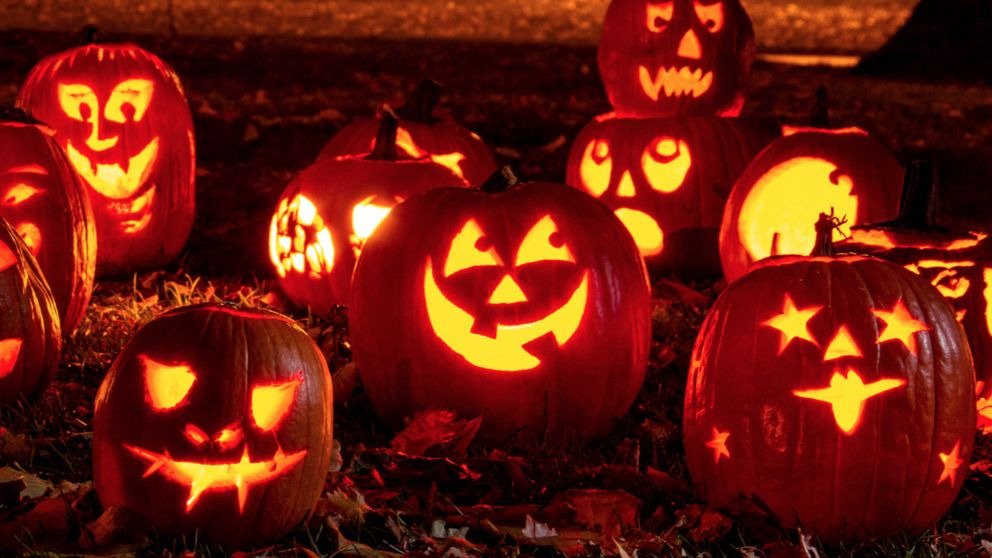Where does Halloween originate from?
The word Halloween originates from the word “Hallowe’en” meaning “Saints’ evening”. We can date Halloween back as far as 1745, as it comes from a Scottish term for All Hallows’ Eve (the evening before All Hallows’ Day).
Currently, the weeks surrounding Halloween we carve pumpkins, however, originally people carved turnips. It was Celtic tradition to carve turnips as turnips give off a gruesome feeling (meaning they can ward off evil spirits.) The turnips were hollowed out and often carved with ‘grotesque’ faces. The evolution from turnips to pumpkins is thought to have happened when Irish immigrants moved to the US.
Why are the colour black and orange often used?
When we think of the colour black, it is typically associates with death, darkness, longer nights and winter. At the same time, the colour orange is the dominant colour of autumn. Orange/fire is associated with Halloween as it marks the time of year where spirits of the departed returned, they built bonfires and wore costumes to deter ghosts.
Nowadays, the two colours; black and orange, are used for a more aesthetic purpose as you find Halloween inspired decoration and food following this colour theme.
Why do we “trick or treat”?
In the 1st Century CE, Cathlocis re-branded many holidays to fit their religion. November 1st became the “Feasts of All Saints and All Souls”. Also, the day before (October 31st) was called “All Hallows – Eve”. Hence, forming the word, we know best “Halloween”.
When “All Hallows – Eve” was first introduced the food of choice was usually ‘soul cakes’. ‘Soul cakes’ were small pastries baked with currants and saffron. Beggars, who went door-to-door and promised to pray for the souls of the deceased would receive these ‘soul cakes’—evolving to children going door to door saying “trick or treat” to receive sweets.
Spain
Halloween celebrations in Spain are slightly different from the United Kingdom and America. In Spain is a three-day celebration, better known as El Dia de Los Muertos (Day of the Dead or All Souls Day). The festival begins on October 31st with Dia de las Brujas (Day of the Witches). They were continuing with Dia de Todos Los Santos (All Saints Day) on November 1st. Finally, finishing with Dia de Los Muertos on November 2nd.
DIY ideas to celebrate Halloween
Games
The ‘Eyeball Dig’ – boil some pasta and let it cool off (the best way to do this is by putting the pasta into the freezer for a quick blast).
In a big bowl put the pasta with some chocolate eyeballs mixed in. The children must rummage through the slimy pasta to find the chocolate treats.
If you are catering the game for older children, hide the bowl in a cardboard box. The box will mean the children are in more suspense as they cannot see what is in the bowel.
Another great game is knocking down the cans, Halloween style. You will need six cans and acrylic paint. Paint the cans in the style of Frankenstein, pumpkin, black cat, zombie, mummy and ghost (you can paint them as elaborate as you desire). After painting the cans stack them on top of each other. With three cans on the bottom, then two cans and one on top. Children can throw balls at the stack to win sweet prices for knocking all the cans down the first time.
If you are providing this game for older children, put weights in the bottom of the can to make it more difficult to knock the cans over.
Face Painting
Face Painting Sheffield can provide fantastic face paint for your Halloween party. From pumpkins, skeletons to cobwebs. However, if you’re thinking of a more DIY costume, follow our steps for the perfect spooky web face.
The spooky cobweb face is a super simple design. You can either use black face paint or an eyeliner pencil to create the look. Start by finding the centre point of the cobwebs; we chose the corner of one eye and the corner of a forehead (use the picture provided for reference).
Draw one straight line out and then two slightly turning to the left and the right.
Join up the lines to create the complete spider’s web.
Finally, for some extra detail, you can draw on small spiders around the cobwebs. Overall, creating a simple, spooky look.
Furthermore, check out some of our designs page for inspiration as well as our latest tutorial of how to create a scary monster!

